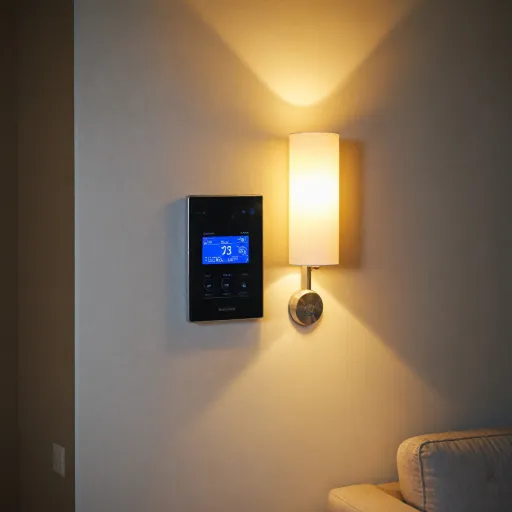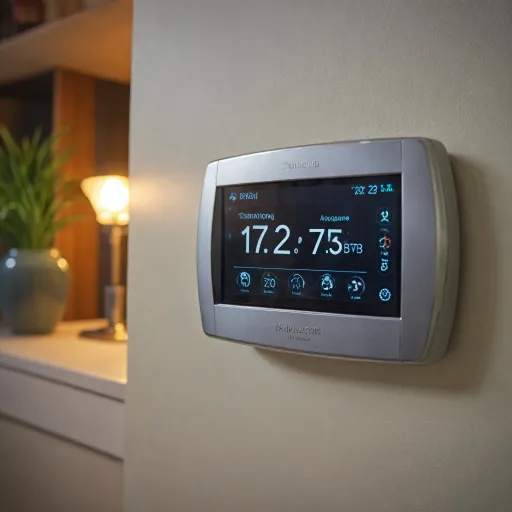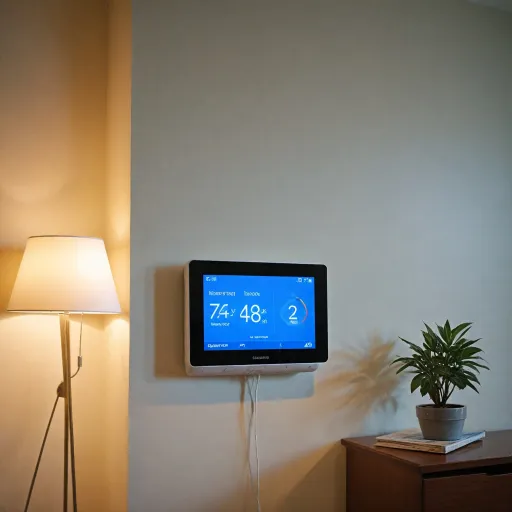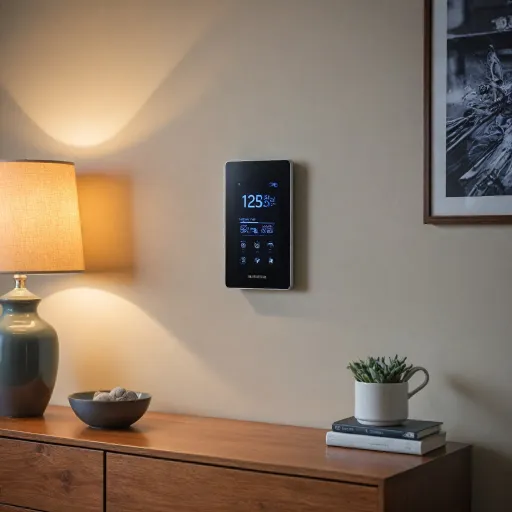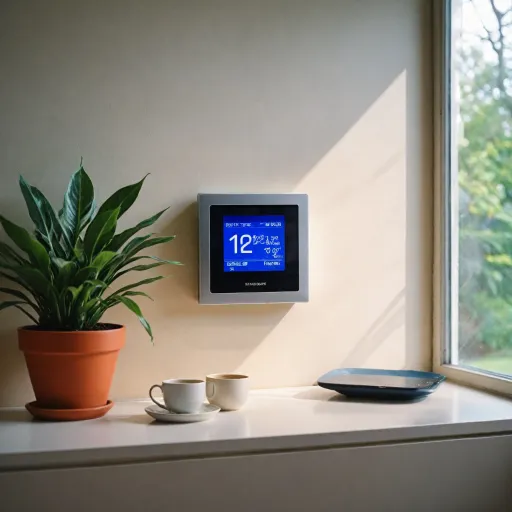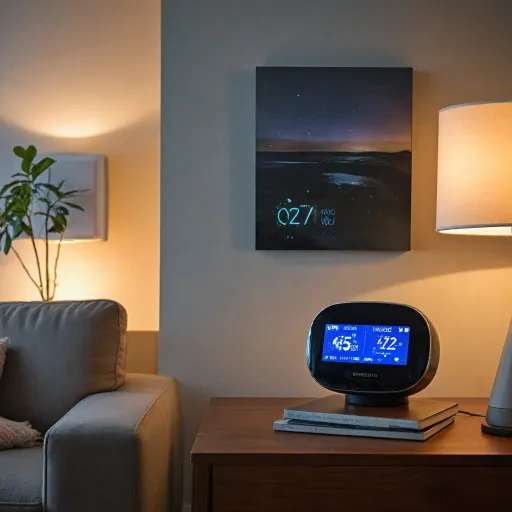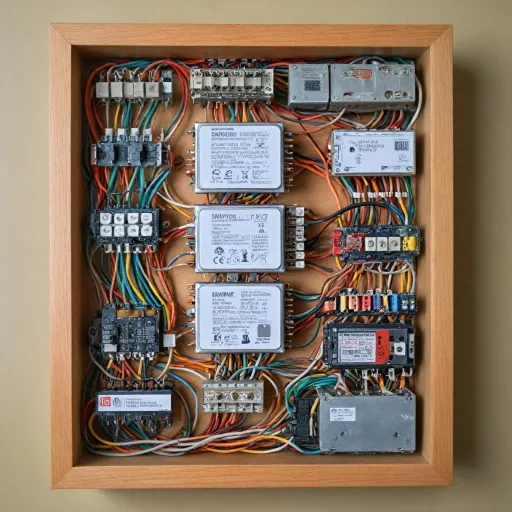
How Infrared Heater Thermostats Work
Exploring the Mechanism of Infrared Heater Thermostats
Infrared heater thermostats are an essential component in the realm of smart home technology, offering a unique approach to heating that combines efficiency with modern control options. These thermostats work by regulating the heat output of infrared heaters, which use radiant heat to warm up objects and people directly, rather than heating the air. This method of heating is not only energy efficient but also provides a more consistent and comfortable indoor environment.
At the core of these systems is the thermostat controller, which plays a crucial role in maintaining the desired temperature. The controller adjusts the heater's output based on the current room temperature and the settings chosen by the user. This ensures that the space remains at a comfortable temperature without unnecessary energy consumption.
Infrared heaters come in various forms, including portable heaters, wall-mounted units, and panel heaters. Each type offers different benefits and can be integrated into a smart home setup with ease. Many of these heaters feature adjustable temperature controls, allowing users to fine-tune the heat output to their liking. Additionally, some models include app control and remote control options, providing flexibility and convenience.
When considering an infrared heater thermostat, it's important to evaluate the product's compatibility with your existing smart home system. Some thermostats offer advanced features such as programmable settings, energy-saving modes, and year warranty options, which can enhance the overall heating experience.
Understanding how these thermostats function is crucial for anyone looking to optimize their home's heating system. By selecting the right product and integrating it effectively, homeowners can enjoy the benefits of efficient and controlled heating throughout the year.
Benefits of Using Infrared Heater Thermostats
Advantages of Infrared Heater Thermostats
Infrared heater thermostats offer a range of benefits that make them a compelling choice for smart homes. These devices not only enhance comfort but also contribute to energy efficiency and cost savings. Here’s a closer look at why you might consider integrating them into your home heating system.
- Energy Efficiency: Infrared heaters are known for their ability to provide radiant heat, which directly warms objects and people rather than the air. This method of heating can be more energy efficient compared to traditional systems, reducing the overall energy consumption and lowering monthly bills.
- Precise Temperature Control: With adjustable temperature settings, these thermostats allow for precise control over the indoor climate. This means you can maintain a consistent and comfortable temperature without unnecessary energy use.
- Cost-Effective Heating: By optimizing energy use, infrared heater thermostats can lead to significant savings over time. The initial price of the product may be offset by the reduction in heating costs, especially during colder months.
- Versatility: Many infrared heaters are portable, allowing for flexible placement within your home. Whether you need a wall-mounted unit or a portable space heater, there are options to suit various needs and preferences.
- Smart Controls: Modern infrared heater thermostats often come with smart features such as remote control and app control, enabling you to adjust settings from anywhere. This convenience is particularly beneficial for those with busy lifestyles.
- Durability and Warranty: Many products come with a year warranty, ensuring reliability and peace of mind. High-quality materials like stainless steel contribute to the longevity of these devices.
For more insights into how thermostats function and their role in smart homes, you can explore understanding the role of a thermostat controller.
Challenges in Integrating Infrared Heater Thermostats
Integration Issues with Infrared Heater Thermostats
While infrared heater thermostats offer a range of benefits, integrating these systems into a smart home setting can come with its unique set of challenges. Understanding the constraints and obstacles can help in overcoming them effectively, ensuring a smooth and efficient setup.
Firstly, compatibility with existing home automation systems can be a significant issue. Not all infrared heaters, especially wall-mounted or portable heaters, are equipped to integrate seamlessly with smart home interfaces. This can often require additional smart modules or compatible smart thermostat models, such as electric or panel heaters with remote control capabilities. Checking product specifications and seeking those with adjustable temperature controls can be crucial.
Another challenge is the cost factor. Infrared heater thermostats can vary significantly in price, depending on features like app control options, energy efficiency, and year warranty agreements. While some high-end models provide excellent control heat functionalities and energy saving benefits, they might not fit within a limited budget. On the flip side, cheaper options might lack essential smart features like stainless steel finishes or sophisticated controls for portable space heaters.
Installation and delivery also contribute to the integration difficulties. Wall-mounted systems or radiant heat units might require professional installation to ensure proper function and safety, adding to the overall price. For those residing in regions like Canada, product delivery timelines can vary, possibly delaying the setup of your perfect heating environment.
Lastly, the learning curve associated with smart infrared electric heater thermostats can be steep for some users. Navigating the complexities of app control, viewing monthly energy usage reports, or configuring the right heat settings with remote control options requires a degree of technical comfort. Users must be willing to invest time in understanding these systems to fully leverage their smart functionalities and achieve optimal indoor heating conditions.
Choosing the Right Infrared Heater Thermostat
Selecting an Infrared Heater Thermostat
When it comes to choosing an infrared heater thermostat, there are several factors to consider to ensure you get the most suitable product for your needs. Infrared heaters offer increased energy efficiency by using radiant heat that warms objects directly, making them an excellent choice for indoor heating.- Budget and Cost: Evaluate the price of different products in the market. Keeping an eye on sales and special offers can help you find a cost-effective option. Remember to consider not just the initial purchase price, but also the potential energy savings in the long run.
- Type of Heater: Decide whether you require a portable heater, a wall-mounted option, or perhaps an integrated panel heater. Portable infrared heaters offer flexibility, while wall-mounted units are stable and save space.
- Control Options: Look for models that offer app control or remote control for convenient thermostat management. This feature allows you to adjust the temperature and settings from anywhere, providing comfort and efficiency.
- Energy Efficiency: Energy-saving capabilities are crucial for reducing electricity bills. Models with adjustable temperature and energy-efficient settings should be prioritized.
- Warranty and Support: A product with a one-year warranty or more ensures reliability. It’s essential to check reviews and warranty conditions of the heater thermostat.
Smart Features to Look for in Infrared Heater Thermostats
Smart Capabilities to Enhance Your Heating
When considering the features that make infrared heater thermostats truly smart, there are several important functions and capabilities that can elevate both convenience and energy efficiency in your home. Here are some key features to look out for:- Remote Control: Many infrared heater thermostats come with remote control options, allowing users to conveniently adjust settings from a distance. This feature can be especially useful for wall-mounted units or panel heaters that may not be easily accessible.
- App Control: Modern smart thermostats often offer app-based control, providing users with the ability to manage their heating systems from their smartphones or tablets. This allows for real-time adjustments, even when you’re not at home, thus maximizing energy savings and ensuring comfort. Keep an eye on compatibility with platforms like iOS and Android to make the most of this feature.
- Adjustable Temperature and Modes: Look for thermostats with flexible settings, including programmable schedules and adjustable temperature modes. This ensures your heating system operates efficiently according to your daily routines, potentially reducing your monthly heating costs.
- Energy-Efficient Operations: Many infrared heaters are designed to be energy efficient, and a smart thermostat enhances this by optimizing heat distribution only when and where it is needed. Consider products labeled as energy-saving for a more sustainable indoor heating solution.
- Integration with Smart Home Systems: For users with existing smart home setups, a thermostat that integrates seamlessly with other systems, such as Google Home or Amazon Alexa, can provide streamlined control and enhanced automation features.
- Year Warranty: A solid warranty, often extending up to a year or more, provides peace of mind by ensuring product reliability and support in case of any defects or issues.
Future Trends in Smart Thermostat Technology
Emerging Innovations in Smart Thermostat Technology
The landscape of smart thermostats, particularly those designed for infrared heaters, is rapidly evolving. As technology advances, several trends are shaping the future of these devices, making them more efficient and user-friendly.
Enhanced Connectivity and Integration
One of the most significant trends is the increased connectivity of smart thermostats. With the rise of the Internet of Things (IoT), these devices are becoming more integrated with other smart home products. This connectivity allows for seamless control of your heating system through various platforms, including app control and voice-activated assistants. The ability to control heat remotely via a smartphone app or a remote control is becoming a standard feature, enhancing convenience and energy efficiency.
Energy Efficiency and Sustainability
As environmental concerns grow, energy-efficient solutions are more critical than ever. Smart thermostats are incorporating advanced algorithms to optimize energy use, reducing waste and lowering electricity bills. Features like adjustable temperature settings and energy-saving modes help users maintain a comfortable indoor environment while minimizing energy consumption. This focus on sustainability is not only beneficial for the environment but also for reducing monthly energy costs.
Advanced Sensor Technology
Newer models of smart thermostats are equipped with advanced sensor technology that can detect occupancy and adjust heating accordingly. This ensures that energy is not wasted heating empty spaces, making these devices ideal for both residential and commercial use. The integration of sensors with infrared heaters enhances the efficiency of radiant heat distribution, providing consistent warmth where it's needed most.
Customization and User Experience
Customization is becoming a key feature in smart thermostat technology. Users can now tailor their heating preferences based on their daily routines and personal comfort levels. This level of personalization is facilitated by intuitive interfaces and easy-to-use controls, whether through a wall-mounted unit or a portable device. The user experience is further enhanced by sleek designs, such as those featuring stainless steel finishes, which blend seamlessly into modern home aesthetics.
Market Expansion and Accessibility
As the demand for smart thermostats grows, manufacturers are expanding their product lines to include more affordable options. This expansion is making smart heating solutions accessible to a broader audience, including those in regions like Canada where heating is a significant concern. With competitive pricing and options like portable space heaters and wall-mounted units, consumers have a wide range of choices to fit their needs and budgets.
Overall, the future of smart thermostats for infrared heaters looks promising, with innovations aimed at enhancing efficiency, connectivity, and user experience. As these technologies continue to evolve, they will undoubtedly play a crucial role in the smart home ecosystem.



